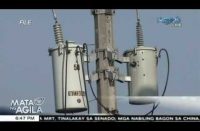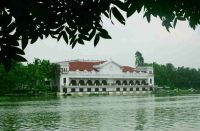
Inside a sealed, airtight clean room at the Goddard Space Flight Center in Greenbelt,Maryland, an international of team scientists and engineers all dressed in white jumpsuits is building what its members hope will provide a deeper look into space than ever before, the James Webb Space Telescope (JWST).
“The James Webb Space Telescope is the scientific successor to the Hubble Space Telescope. It’s really the next big space telescope that is being built, so it will pick up where Hubble leaves off, scientifically. And it’s also an extreme engineering challenge,” said Paul Geithner, deputy project manager technical of the JWST.
Named after former NASA administrator James E. Webb, the telescope originated in 1996 and is set to surpass its predecessor with numerous technological advancements.
“The two biggest, most conspicuous features on the Webb telescope are its big five-layer sun shield, which acts like an umbrella to protect it from the heat of the sun and stray light from the earth, and the big primary mirror that is made of 18 individual six-sided segments to make a big 22-foot diameter mirror,” said Geithner, who also worked on the mirrors for the Hubble.
Most recently, the team – composed of members from NASA, European Space Agency,Canadian Space Agency, and other industrial contractors, just finished the first cryogenic performance tests of the scientific instruments, simulating the launch conditions and subjecting the instruments to the temperatures of deep space.
In 2015, the team will replace some of the key components in the instrument module for further testing, start assembling the flight telescope, and continue building the spacecraft bus and sunshield.
The Webb will orbit around the second Lagrange point, 1 million miles (1.5 million kilometers) from the sun. There scientists say it will produce high-definition images and collect light and data from stars and galaxies that are still expanding and whose light is moving farther away 13.5 billion years after formation.
Those stars and galaxies are giving off light that has stretched into the infrared portion of the spectrum, scientists say, hence the need to arm the JWST with new scientific instruments like the Near Infrared Camera (NIRCam).
“We had to build it as an infrared telescope because one of its primary science missions is to see the light from the first stars and galaxies to form after the Big Bang,” said Dr. Matthew Greenhouse, a project scientist for the JWST.
The use of infrared cameras, however, presented new challenges, many of which came down to size.
For the mirrors to fit in the Ariane 5 rocket’s nosecone, which is scheduled to launch in 2018 from French Guiana, scientists had to design the secondary mirror and its support structure, as well as parts of the primary mirror to be folded into the rocket.
Scientists also had to design the structure to withstand its own infrared light, Greenhouse said.
“To be an infrared telescope, we also had to make it a very cold telescope, and this is because everything above absolute zero emits infrared radiation. So if we had infrared goggles, we would see that our bodies are glowing in the infrared, the walls and the floors would be glowing, so if we didn’t cool this telescope down, it’d be blinded by its own infrared emission,” Greenhouse said.
The solution for keeping the telescope cold once again came down to size.
“So we found that we could deploy a giant sunshade the size of a tennis court and designed the JWST such that it always lives in the shadow of that sunshade. As long as it’s in the sunshade, it’ll cool passively to the temperature that we need, but we have to make sure the sun never shines on it because if it does it could break the JWST,” Greenhouse said.
The sunshield has five layers and each layer is cooler than the one below. It will allow the telescope to cool down to a temperature below 50 Kelvin (-233 degrees C o -370 degrees F). “The near-infrared instruments (NIRCam, NIRSpec, FGS/NIRISS) will work at about 39 K (-234° C or -389° F) through a passive cooling system. The mid-infrared instrument (MIRI) will work at a temperature of 7 K (-266° C or -447° F), using a helium refrigerator, or cryocooler system,” according to NASA.
Building this massive technological tool comes at a cost. Since the project’s inception, the price has soared to an astounding $8.8 billion to build, launch and run the JWST.
For Geithner, putting a price tag on the return on investment simply cannot be done. He believes Hubble serves as an example of the potential that the JWST has in store for the world.
“Whenever engineers build a new tool for scientists and look at nature with it, we always discover amazing things and that is the promise of the James Webb Space Telescope,” Geithner said.
REUTERS / NASA







